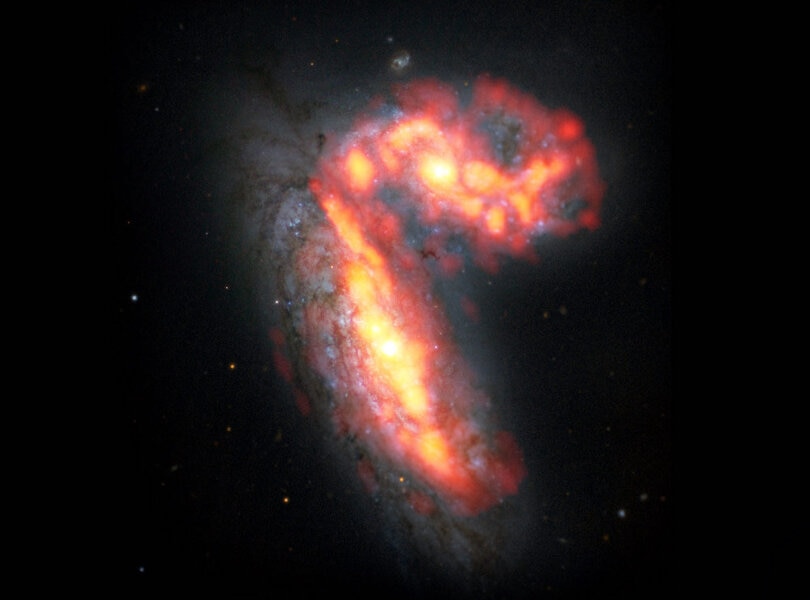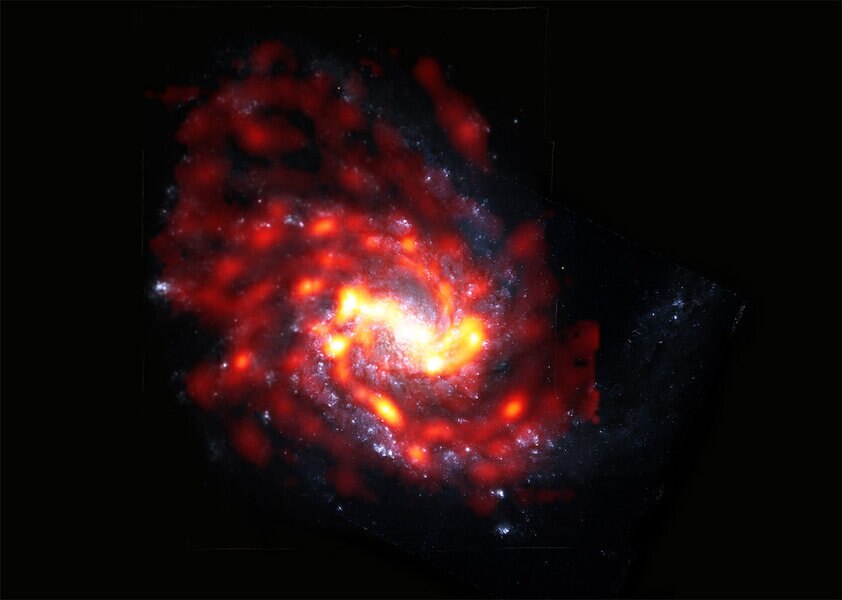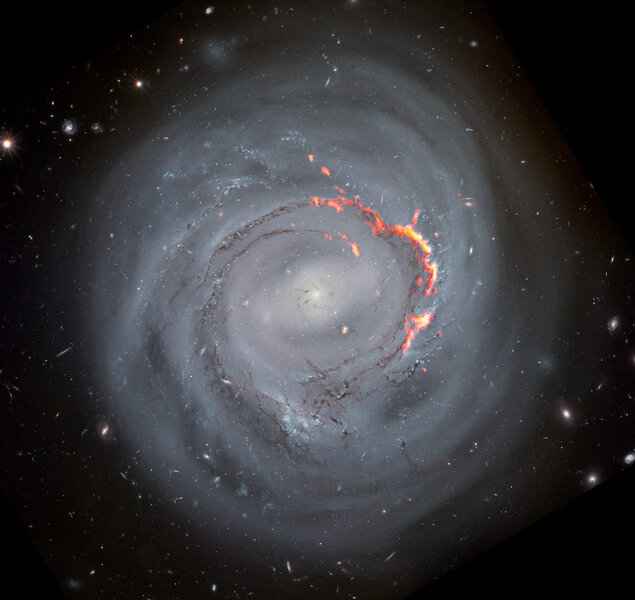Create a free profile to get unlimited access to exclusive videos, sweepstakes, and more!
What is causing galaxies in the Virgo Cluster to die?
A new survey aims to find out.

Some galaxies die young.
A galaxy is an immense structure of stars, gas, dust, and dark matter, all held together by mutual gravity. Stars are typically the main source of visible light from galaxies, and in most galaxies we see stars are being born from clouds of gas and dust. That guarantees that those galaxies will still shine for many billions of years.
But if a galaxy runs out of gas, it can't make any more stars. Massive blue stars die first, so over time the galaxy reddens, and eventually runs out of star-making gas entirely. When it does, we say it's dead. "Red and dead" is a common term, referring to the color of the remaining low-mass stars as well.
That rate of star formation varies from galaxy to galaxy. The Milky Way makes roughly 2-3 times the Sun's mass worth of stars every year, but some galaxies make more and some less. In many cases, that rate depends on where the galaxy is. There are galaxy clusters, which can have thousands of galaxies in them, and in many of these clusters the star formation rate in the member galaxies is low.
That means something is quenching star birth in these galaxies. Lots of different things can do that, actually. A big one is ram pressure stripping, where a galaxy traveling through a cluster has its internal gas stripped away as it rams through the thinly distributed gas between galaxies (as I generally point out, it's similar to opening the windows on your car while driving to force out the polluted air your dog decided to make after you unwisely fed it some human food like a burrito). If the galaxy's internal gas is lost, it can't make stars any more.
But there are other potential causes as well. If a big galaxy passes another — common in a cluster environment where they're packed fairly close together — the gravity of one can strip the gas out of the other, which again suppresses star birth. Sometimes just passing near another galaxy can stir another galaxy up, heating its internal gas so much it can't collapse to form stars. The gas in between cluster galaxies (called the intra-cluster medium) is thin but extremely hot, and can heat up cold gas inside a galaxy, again keeping it from collapsing to form stars. Other processes can also pitch in to kill a galaxy's ability to make more stars, too.
As it happens all these processes change a galaxy's gas content in different ways, so in practice that may be distinguishable, giving astronomers an understanding of just what happened to a particular galaxy to quench it.
To get a grip on this, a team of astronomers used the Atacama Large Millimeter/submillimeter Array (ALMA) to observe the Virgo Cluster, the nearest galaxy cluster to us. Virgo is about 55 million light years away, and has many hundreds if not thousands of galaxies in it in a volume about 8 or so million light years across (for comparison, our own Local Group of galaxies is maybe 3 million light years across and has only three big galaxies in it including ours; Virgo is packed). The total mass of the cluster is a staggering 200 trillion times the mass of the Sun.
It's a little unusual as clusters go in that many galaxies in it are still actively forming stars, which means they still have gas in them we can observe. That gas is mostly hydrogen, but carbon monoxide (CO) is very common as well. Cold hydrogen is hard to observe, but CO emits light at wavelengths ALMA sees very well indeed. So the astronomers observed 51 galaxies in Virgo, and were able to map the location of CO gas in 49 of them down to scales of just a couple of hundred light years (a fraction of a percent of the size of the galaxies themselves).
This project — called VERTICO, for Virgo Environment Traced in CO — and it's really just getting started. The paper they astronomers just published about it discusses their methodology, the need for this survey, and how it can be used. The data will be released to the community of astronomers to use to investigate the cold gas in these galaxies and see what's what.
In general, for example, we do know ram pressure stripping is a major source of star formation quenching. But how widespread is it? How efficient is it? How does it work on small scales? Recent work showed that sometimes the gas can fall back onto the galaxy and encourage star formation! That's a small fraction of what's lost, but what fraction? And how do the other processes outlined above affect individual galaxies in a cluster?
The aim of VERTICO is to help astronomers answer those questions. It may take a little while, but the data are there. Astronomers should have a field day with the survey.
And you may be wondering, what of our own galaxy? The Local Group in which the Milky Way resides doesn't have a lot of material between galaxies, and we're not screaming though it as rapidly as Virgo Cluster galaxies anyway (the overall gravity here is much lower due to the smaller number of big galaxies). Still, the Milky Way's star-forming heyday was billions of years ago, so we're in decline... for a while. In four-and-a-half-billion years or so we'll collide and merge with the Andromeda galaxy, and we both have a lot of gas lying around to make stars. The fireworks then as the rate of star birth goes up by a large factor should be something to see.
Mark your calendars.






























